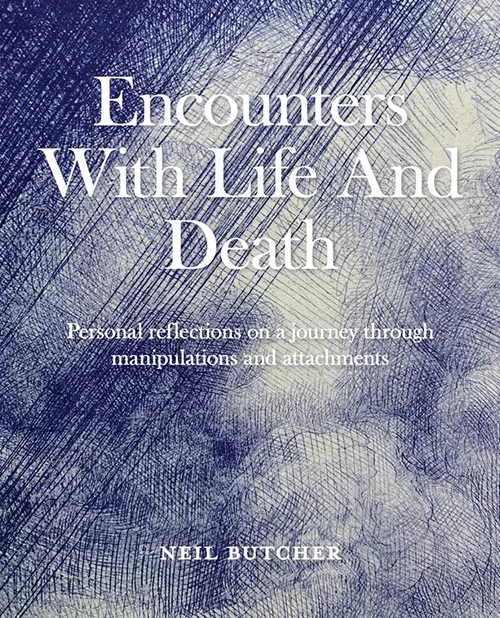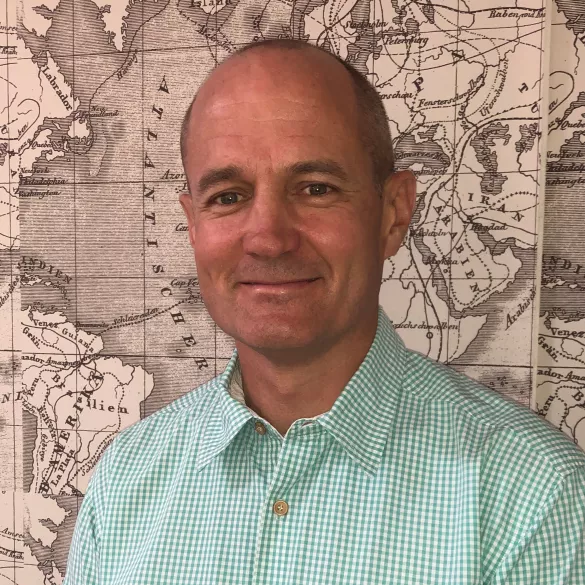I have just finished reading the final book in the science-fiction series Remembrance of Earth's Past by Liu Cixin, which I found to be an extraordinary and mind-bending work of fiction. I’m not sure if the recent attempt to bring the first book to the small screen as a series (The Three-Body Problem) will manage to capture anything of the brilliance of the books, but I will no doubt watch it soon as I have a voracious appetite for movies and TV of all descriptions (my friend Bruce still finds it difficult to believe that I actually watched Piranha Women from the Avocado Jungle of Death as part of my preparation for Mad Max: Fury Road).
I found just one of those glimmers of brilliance around 100 pages into the second book, The Dark Forest, when it is observed that Bill Hines (one of the Wallfacers in the book charged with finding innovative solutions to prevent earth’s coming invasion by the Trisolarans) is introduced as:
The only person in history to be nominated for the Nobel Prize in two sciences simultaneously for the same discovery…that brain activity for thoughts and memories operated on the quantum level rather than on the molecular level as previously believed. This discovery pushed brain mechanisms downward to the microstate of matter, rendering all prior research nothing more than superficial attempts that merely skimmed the surface of neuroscience. This discovery also demonstrated that the animal brain’s capacity to process information was several orders of magnitude higher than previously imagined, which lent credence to long-held speculation that the brain had a holographic structure.
There’s so much packed into this paragraph conceptually that one might have thought it would warrant full subsequent exploration but there is no subsequent direct reference to this observation in the series.
The paragraph resonated with me not just because it is such an intriguing concept but also because it reminded me of observations I have repeatedly made regarding the outdated theories about how the brain works that still underpin, and sometimes are taught in, teacher education programmes. Many of these either pre-date recent and ongoing findings in the world of neuroscience and human biology or are based on a misunderstanding of what neuroscience says. So, several of our approaches to teaching pedagogy are likely rooted in misplaced concepts of how the human brain works. A recent common example is the neuromyth that students learn better when they receive information in their preferred learning style. While neuroscience has shown that different neural networks process different types of information (visual, auditory, and kinaesthetic), these networks are not isolated, but instantaneously interact through massive cross-modal connectivity. As Coch notes, ‘in the intact brain in the real world (e.g. a child in a classroom), it is virtually impossible to exclusively process information in a single sensory modality’. [My thanks to colleague Merridy Wilson-Strydom for helping me to compile these two paragraphs and find the research references.]
The concept also intrigued me sufficiently to run a quick online search for the idea of quantum brain functioning. The first few references I found were from PubMed Central, all relatively recent. They included: 'Revisiting the Quantum Brain Hypothesis: Toward Quantum (Neuro)biology?' by Peter Jedlicka (2017); 'Quantum and Electromagnetic Fields in Our Universe and Brain: A New Perspective to Comprehend Brain Function' by Zamzuri Idris et al (2021), and 'Experimental indications of non-classical brain functions' by Christian Matthias Kerskens et al, (2022) which proposes that our brains could use quantum computation. Apart from being even more impressed by Liu’s work, this made me contemplate again just how little we know about human intelligence. I have no idea whether these research papers signal meaningful new lines of enquiry, but it seems to me most plausible to expect that coming neuroscience research will keep overturning everything we think we know about how the human mind works.
I touch on similar issues briefly in my new book, Encounters with Life and Death, observing that:
I have only recently come to recognize how the human body is really an integrated learning organism exquisitely designed to support the voyage of discovery of life on earth of our Souls. The rational, conscious mind is a critical aspect of this design, but it is part of a much bigger human intelligence and only functions effectively when its integration with the rest of our human body is considered. A full explanation of this is beyond the scope or purpose of this book, but even just three observations illustrate the complexity of that design and the futility of our exclusive focus on the conscious, rational mind.
First, the conscious mind undertakes 40 conscious bursts of activity per second, while the non-conscious mind processes a million operations per second. Clearly, what is happening at the sub-conscious level matters tremendously and should be deserving of far greater attention and nurturing than it receives. Second, spinal nerves connect the brain with the nerves in most parts of the body, while the enteric nervous system comprises two thin layers of more than 100 million nerve cells lining the gastrointestinal tract and integrated with the gut microbiome. This has been labelled as the ‘second brain’ and suggests that the idea of ‘trusting your gut’ is more than just metaphorical. More importantly, just at the level of the gut microbiome (but also throughout our entire bodies), ‘we’ coexist with trillions of microbes, all of which have a direct and significant impact on how we function. Third, knowledge is emerging rapidly on epigenetics, the study of how human behaviours and environment can cause changes that affect the way our genes work. These are inherited at birth from our ancestors and change throughout our lives, influenced by our behaviours and our environment. These cellular ‘memories’ are stored throughout our entire bodies and we are only just beginning to understand how they might function.
Just these limited insights indicate that effective functioning of our minds and our full human capabilities, conscious and sub-conscious, is a capability distributed throughout our whole body in an integrated way. Yet, the approaches we take to learning and the priorities codified in school curricula reflect none of this reality and do not seek to nurture this full capability. Similarly, many people simply do not see any connection between how their brain works and how they treat the rest of their body.
Our full human capability is much more elegantly complex than our current rudimentary scientific understanding of it might have us believe. I find it exciting that scientists will push the boundaries of what we think we know, forcing us to recalibrate false understanding and helping to deepen our knowledge of our own biology. Just one example of this that I engaged with recently can be found in a podcast from the Australian Broadcast Corporation’s Big Ideas podcast called ‘Intuition — the science of knowing WHAT without knowing WHY’. Strangely, though, even in this podcast, the interviewer uses disparaging language throughout to dismiss this integrated, human capability as inferior to dependence on rational thought and data/facts. Rather than recognizing from the insights of the interviewee that we are only scratching the surface of this capability, she perpetually uses dismissive language (for example, saying that intuition sounds like a ‘science-free zone’). Midway into the interview, she says she is ‘sceptical about intuition’, saying that she wants ‘more data’ rather than any reliance on intuition. This seems a bizarre observation, as if our subconscious, our microbiome, and our epigenetics are capabilities we can (and should) seek to override rather than embracing them and learning how to nurture and harness them.
Whether we like it or not, this human capability is distributed through our entire bodies and is integral to how we function. We can either embrace that, seek to learn more about it, and commit to nurturing it or we can seek to override aspects of it or pretend that they are somehow disconnected. The latter seems to have been, and remains, the dominant approach of school systems globally. I find it deeply depressing that we have demonstrated no social capability to design education systems that can evolve with this new knowledge base. We owe it to ourselves and our children to re-think the purpose of education and help young people to embrace, and flourish through, their full capability as humans – but first we have to embrace that capability ourselves.



